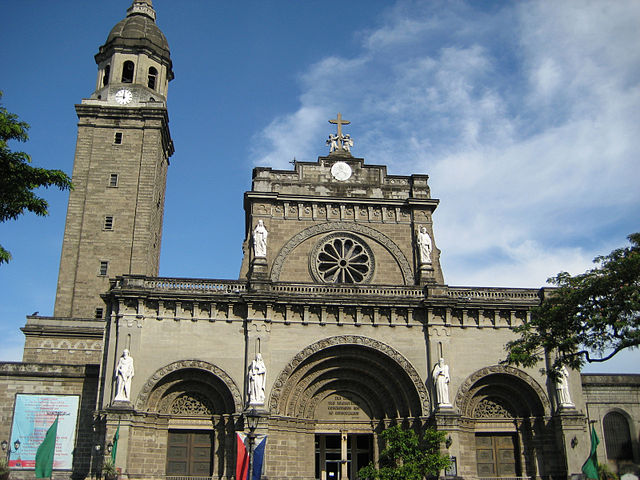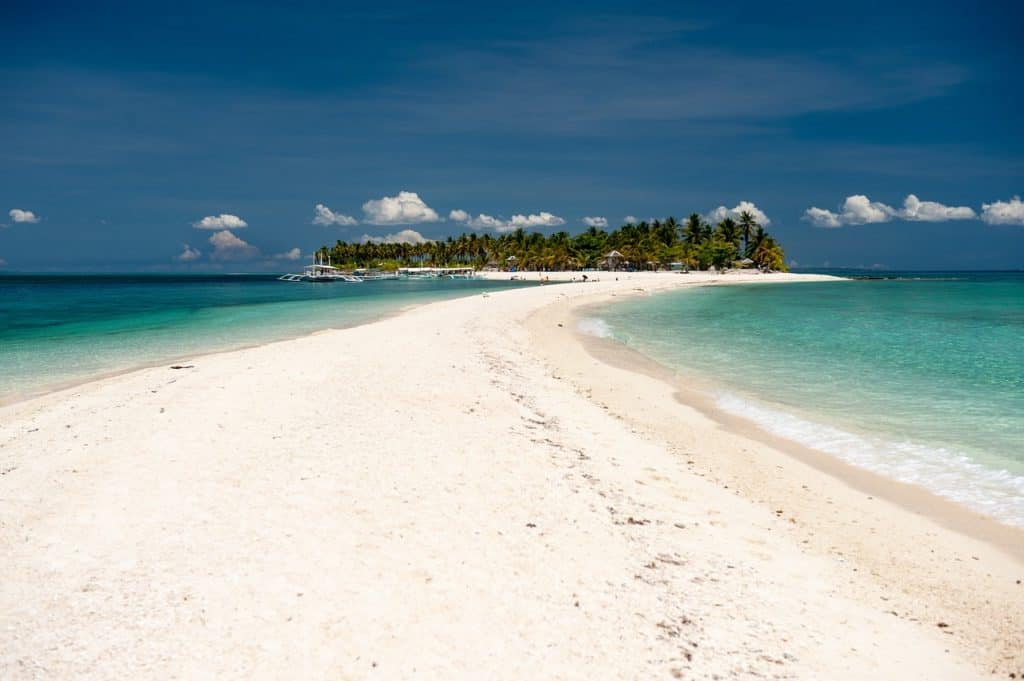The Philippines is a predominantly Christian country, with more than 80% of its population identifying as Roman Catholic. As a result, churches play a significant role in the daily lives of Filipinos, and they are considered sacred places of worship, spiritual refuge, and community gathering.
The history of Christianity in the Philippines dates back to the 16th century, when Spanish colonizers arrived in the country and introduced Catholicism. Since then, the Catholic Church has become deeply ingrained in Philippine society, influencing not only religion but also politics and culture.
The country is home to numerous churches that are not only religious landmarks but also cultural and historical treasures. One of the most notable churches in the Philippines is the Basilica Minore del Santo Niño in Cebu City. Built in the 16th century, this church is home to the miraculous Santo Niño de Cebu, a statue of the infant Jesus that is believed to have healing powers. Every year, millions of pilgrims flock to this church to pay homage to the Santo Niño during the Sinulog Festival, one of the country’s largest and most colorful festivals.
Another iconic church in the Philippines is the San Agustin Church in Intramuros, Manila. This church was built in the 16th century and is considered one of the oldest stone churches in the country. It is also a UNESCO World Heritage site, recognized for its Baroque architecture and significant role in the country’s history.
Aside from these famous churches, there are countless other churches throughout the Philippines that are worth visiting. Many of them are located in small towns and villages, and they offer a glimpse into the local culture and way of life. These churches are not only places of worship but also community centers, where locals gather for religious celebrations, festivals, and other events.
In recent years, churches in the Philippines have faced numerous challenges. The COVID-19 pandemic has forced many churches to close their doors temporarily, and the country’s ongoing political and social issues have led to a decline in attendance and support for the Catholic Church. Despite these challenges, however, churches in the Philippines remain an important part of the country’s cultural and religious identity.
In conclusion, churches in the Philippines are more than just places of worship. They are cultural and historical landmarks that play a significant role in the country’s identity and way of life. Whether you’re a devout Catholic or simply interested in exploring the country’s rich history and culture, visiting the Philippines’ churches is an experience you won’t soon forget.
More informations about Churches in the Philippines
MANILA CATHEDRAL

Located in the Plaza Roma, Intramuros, Manila Cathedral is the main Roman Catholic church in the Philippines.. Officially known as the Manila Metropolitan Cathedral-Basilica, it is the seat of the Archibishop of the Archdiocese of Manila, who is normally regarded as the Roman Catholic Primate of the Philippines.
Manila Cathedral is actually the eighth cathedral to have been built on this site, the earlier ones having been destroyed by earthquake, fire, or war (including an almost compete destruction during the Second World War).
History
In its first years (1571-79), the site of the present-day Manila Cathedral was a parish church known as the Church of Manila and it was governed by the diocese of Mexico.
In 1581 the first Manila Cathedral was built and consecrated on the site of the former Church of Manila. The materials used were nipa (palm used as thatch), wood and bamboo – readily available materials that were used in building houses at this time. This cathedral was damaged by a typhoon in 1582 and then was destroyed by fire just two years later in 1583. The fire began during the funeral mass for a Governor General in the nearby San Agustin Church. The fire burnt that church, and later the Manila Cathedral, the bishop’s residence, and many other buildings in Manila.
learn more https://www.fabulousphilippines.com/manila-cathedral.html
Plaza Roma, Intramuros, Manila
The seat of the Catholic Archdiocese of Manila is presently the 6th cathedral to rise on the site since 1581. Previous structures were destroyed by typhoons, earthquakes, fire, and the last war. It was rebuilt on the second half of the 1950s through the efforts of Architect Fernando Ocampo and Archbishop Rufino J. Santos. The cathedral incorporated the stone carvings and rosette windows celebrating the Christianization of the Philippines. Light up with its clerestory. Mosaic artwork decorate three of its side chapels.
SAN AGUSTIN CHURCH
Gen. Luna cor. Real Street, Intramuros, Manila
The oldest stone church in Metro Manila dates back to 1571. An intricately carved door opens to the church. Of great interest are the Baroque pulpit, molave choir stalls, and an 18th century pipe organ. Like an impregnable fortress, San Agustin has withstood the ravages of time wrought by both nature and by man.
SAN SEBASTIAN CHURCH
Plaza del Carmen, Quiapo, Manila
This small jewel-box church is the first all-steel church in the Philippines and in Asia; and the second in the world. Design for the church was finished in 1883 and was prefabricated in Belgium. The completely knocked-down church was shipped backed to the Philippines in 6 ships. It weighed close to 50,000 tons while its stained-glass windows which are intact until now were, according to Father Ceniza, done in France.
OUR LADY OF PEACE AND GOOD VOYAGE
Antilopo, Rizal
Antipolo is known to be the home of Our Lady of Peace and Good Voyage. History says that this miraculous icon has traveled back and forth between Manila and Acapulco eight times and on several occasions was credited with saving her galleon from destruction by warning the people about an impending disaster.
BACLAYON CHURCH
Baclayon town, Bohol
spacer
Located 6 kilometers from the city proper. The church is the oldest stone church in the country, built by the Jesuits in 1595.
DAUIS CHURCH
Dauis town, Bohol
spacer
Located 3 kilometers from the city proper. This is one of Bohol’s beautiful churches, which has retained its Spanish architecture although it has a semi-modern façade.
LOBOC CHURCH
Loboc town
Located 24 kilometers from Tagbilaran City. The second oldest church in Bohol, built in 1608, with a three-storey convent.
LOON CHURCH
Loon town
Located 25 kilometers from the city proper. The crowning glory of the Recollect churches in Bohol.
MARIBOJOC CHURCH
Maribojoc town
spacer
Located 14 kilometers from the city proper. This parish was founded in 1768, built in 1798, and fully constructed after 18 years.
PAOAY CHURCH
Laoag, Ilocos Norte
This fortress-like church is probably the most popular in this area. Styled in “earthquake Baroque”, its walls are strongly fortified by sturdy posts.
BASILICA MINORE DEL STO. NIÑO
Cebu City
Shrine of the oldest religious relic in the Philippines, the statue of the Child Jesus. A token of friendship by Magellan to Queen Juana in 1521, the Santo Niño de Cebu has survived fires and other catastrophes throughout the years.
MIAG-AO CHURCH
Iloilo
spacer
Located 40 km. southwest of Iloilo City; built in 1768, native façade; a unique explosion of botanical motif reminiscent of Aztec Art. It was declared a national landmark in 1973 and is listed in the UNESCO world heritage list.
SAN JOAQUIN
Iloilo
spacer
This is the only church in the Philippines with bas-reliefs of historic battles set in Tetuan, Morocco, between the Spanish Christians and the Moroccan Moors.
VALLADOLID CHURCH
Valladolid, Negros Occidental
spacer
The size of the church and the convent, which was built by the Recollect missionaries in 1851, support some views that the church authorities during those days were the most powerful in running the affairs of the government all throughout the country.
CHURCH OF OUR LADY OF PEACE
La Carlota City, Negros Occidental
spacer
In the heart of downtown La Carlota, this century-old church is a living witness to the devotion of the predominantly Catholic La Carlotenos. The church has the distinction of one of the very few churches of romanesque architectural design in the province.
BAGUIO CATHEDRAL
Baguio City
spacer
Rising above the city skyline are the pinkish hues of the Baguio Cathedral. The cathedral is but one of religious landmarks which dot the city. There is the Bell Temple, north of the city the Maryhurst Seminary with its brilliant gardens, and Lourdes Grotto with its 252 steps to heaven.
SHRINE OF THE NUESTRA SEÑORA DE MANAOAG
Pangasinan
spacer
The shrine of Nuestra Senora of “Apo Baket” is situated atop the hill. The shrine is known all over the Philippines. Devotees frequent the church especially on Saturdays and Sundays.
CHURCH OF ST. JAMES
Pangasinan
spacer
The church was built by the Augustinians in Bolinao in 1609. It houses wooden “santos,” nowadays a rarity, with the toll of time and the elements blurring their finely sculptured features. The antique size altar is flanked by two grinning, tongue-protruding aztec visages presumably of Mexican influence and brought over by the galleons trade.
ST. MARTIN DE TOURS
Taal, Batangas
spacer
Once the biggest church in all Southeast Asia, it was designed by a Spanish architect-priest and built in the mid-1800s. Taal also possesses a number of other sacred shrines, including the Wells of Santa Lucia, the water of which is reputed to have miraculous healing powers.
SANTUARIO OF OUR LADY OF CAYSASAY
Taal, Batangas
spacer
The image of the Blessed Virgin Mary who is said to be miraculously disappearing from any site where it is brought and appearing at the sanctuary.
BORASOAIN CHURCH
Malolos, Bulacan
spacer
The seat of the Revolutionary Congress where the First Filipino Constitution was drafted and ratified.
DARAGA CATHOLIC CHURCH
Albay
spacer
Built in 1773 by Franciscan missionaries. This is highly prized by art enthusiasts because of its rich baroque architecture. Its very huge structure is considered above-standard. At closer look, it contains archeological relics such as “santos” and religious seals carved articulately on volcanic rocks. These relics are considered priceless and collector’s items.
oldest stone church in the philippines
The Philippines is known for its rich cultural heritage and historical landmarks, one of which is the oldest stone church in the country. Located in the town of Baclayon in Bohol province, the Baclayon Church stands as a testament to the country’s rich Spanish colonial past.
Built in the late 16th century by Jesuit priests, the Baclayon Church is considered one of the oldest stone churches in the Philippines. Its construction began in 1595 using coral stones and egg white as a binding agent. The church was completed in 1727 and has been standing for over 400 years.
The church’s architecture is a blend of Spanish and Filipino influences, with its ornate façade and intricate details reflecting the Baroque style of the Spanish colonial period. The church’s bell tower stands separate from the main building and is said to have served as a watchtower during the Spanish colonial period.
The interior of the church is just as impressive, with its high ceiling and grand altar featuring a large painting of the Assumption of the Virgin Mary. The church also houses a museum that displays religious artifacts and other historical items, giving visitors a glimpse into the church’s rich history.
Over the centuries, the Baclayon Church has withstood numerous earthquakes and natural disasters. In 2013, the church suffered extensive damage during a 7.2 magnitude earthquake that struck Bohol province. Despite the damage, the church was quickly restored and reopened to the public in 2017.
Today, the Baclayon Church remains an important landmark in the Philippines, attracting visitors from all over the world who come to marvel at its historical and architectural significance. It is a testament to the country’s rich cultural heritage and serves as a reminder of the enduring legacy of the Spanish colonial period in the Philippines.
In conclusion, the Baclayon Church is a remarkable historical landmark in the Philippines that stands as a testament to the country’s rich cultural heritage. Its impressive architecture, ornate details, and rich history make it a must-see destination for visitors to the country, and a source of pride for Filipinos around the world.
churches in the philippines people ask
What is the oldest church in Philippines?
San Agustin Church
Completed in 1607, it is the oldest stone church in the country. In 1993, San Agustin Church was one of four Philippine churches constructed during the Spanish colonial period to be designated as a World Heritage Site by UNESCO, under the collective title Baroque Churches of the Philippines.
What is the biggest church in the Philippines?
It is considered to be the largest church in the Philippines and in Asia, standing 88.6 metres (291 ft) long and 48 metres (157 ft) wide. St. Martin of Tours is the patron saint of Taal, whose fiesta is celebrated every November 11
how many catholic churches are there in the philippines,
how many churches in the philippines,
how many catholic churches are there in the philippines?,
how many churches are in the philippines,
when was the baroque churches in the philippines
, what are there no lcms churches in the philippines?,
how many christian churches in the philippines,
how many churches of iglesia ni cristo in the philippines
, how many christian churches are there in the philippines,
how many baroque churches in the philippines
four churches
Baroque Churches of the Philippines. These four churches, the first of which was built by the Spanish in the late 16th century, are located in Manila, Santa Maria, Paoay and Miag-ao. Their unique architectural style is a reinterpretation of European Baroque by Chinese and Philippine craftsmen. learn more here https://whc.unesco.org/en/list/677/
how many evangelical churches in the philippines
how many baptist churches in the philippines
If you are interested to live in the Philippines check out camella freya
You may also like
Giovanni Carlo P. Bagayas is a seasoned travel guide and passionate explorer from the Philippines. With years of experience uncovering the hidden gems of his homeland, Giovanni has dedicated his career to showcasing the beauty, culture, and adventure that the Philippines has to offer. As the author of Best Philippines Travel Guide, he combines his expertise and love for travel to provide insightful tips, detailed itineraries, and captivating stories for travelers seeking unforgettable experiences in the Philippines. Giovanni’s mission is to inspire wanderlust and help visitors discover the true essence of his vibrant country.


